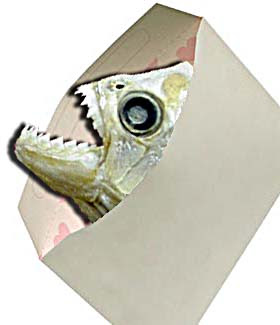850 MHz Celeron Coppermine
Intel motherboard w/100MHz FSB
BIOS circa 2001
Purchase price: $1 in 2005
Booted him up, and LILO booted "Linux-Homer...."
It came up. Checked the version of ESP (Evolution software platform). Last modification date: December 13, 2001
Wow.
I looked a little bit at some of the code that I wrote over seven years ago.
...
/// from ir_laser.cpp
ISwitchDevice *frickin_laser_beam; // ...frickin' laser beams? Is that too much to ask?
unsigned count;
test.check(ir_laser.obtain_interface (0,
"Evolution.ISwitchDevice",
(IResource**)&frickin_laser_beam, count) == RESULT_SUCCESS);
This robot STILL has a frickin' laser beam, after all of these years. I really need to connect it up.
For a quick speed comparison, Tom's Hardware shows the following "render times in seconds" for a Dragon_Character_rig (Rendering 1024x768 Single).
Prescott,3800/200,925X,DDR2-533
85
Thunderbird,1000/100,KT133A,SDR133 279
Coppermine,800/133,815EP,SDR100
434
I think I'm going to hard wire the laser beam so that it turns on when the computer's powered up.



